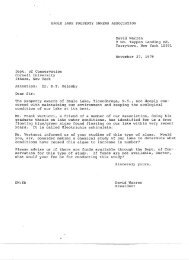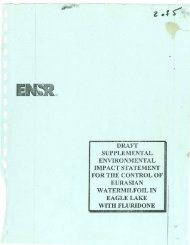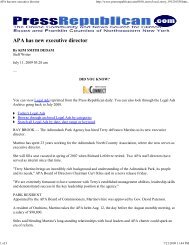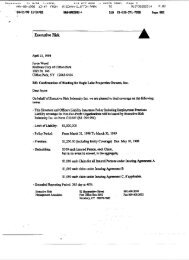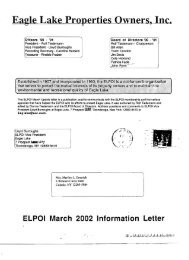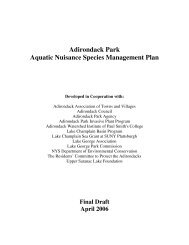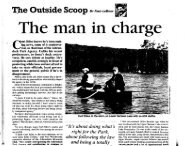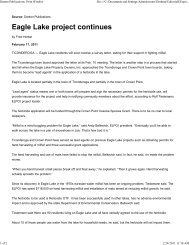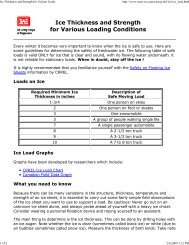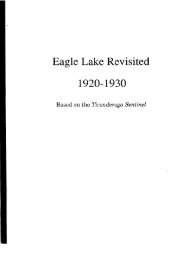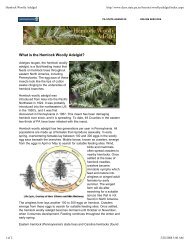Maine Field Guide to Invasive Aquatic Plants - Brant Lake Milfoil ...
Maine Field Guide to Invasive Aquatic Plants - Brant Lake Milfoil ...
Maine Field Guide to Invasive Aquatic Plants - Brant Lake Milfoil ...
You also want an ePaper? Increase the reach of your titles
YUMPU automatically turns print PDFs into web optimized ePapers that Google loves.
WATER CHESTNUT<br />
Trapa natans<br />
NOT NATIVE TO MAINE - INVASIVE<br />
I N V A S I V E P L A N T S<br />
Habitat: Water chestnut grows in the floating-leaf and submersed<br />
plant community. It thrives in the soft sediments of quiet, nutrient<br />
rich waters in lakes, ponds and streams. The plant is well adapted<br />
<strong>to</strong> life at the water’s edge, and prospers even when stranded along<br />
muddy shores.<br />
Description: Water chestnut has two distinct leaf types. The floating<br />
leaves are somewhat triangular (or fan shaped) in form, with<br />
conspicuously <strong>to</strong>othed margins along the outside edges. The upper<br />
surface of the leaf is glossy, the undersides covered with soft hairs.<br />
The leaves are arranged in a loose, radiating pattern or rosette and<br />
joined <strong>to</strong> the submersed stem by long leaf stems, or petioles (up <strong>to</strong><br />
15 cm long). Spongy inflated bladders in the petioles provide<br />
buoyancy for the rosette. The rosettes are anchored <strong>to</strong> the sediments<br />
on stems reaching lengths of up <strong>to</strong> 5 meters. The first submersed<br />
leaves <strong>to</strong> emerge are alternate, linear and entire, but these give way<br />
as the plant develops <strong>to</strong> feather-like finely divided, leaf-like roots (or<br />
root-like leaves—there is ongoing debate as <strong>to</strong> which is correct). The<br />
upper leaf-roots contain chlorophyll, causing them <strong>to</strong> be greener.<br />
When water levels drop, those lower down anchor the plant <strong>to</strong><br />
sediments. Small white flowers appear above the rosettes in mid<br />
<strong>to</strong> late July, each emerging from its own stalk from the axils of the<br />
floating leaves. When the fruits form they submerse and dangle<br />
beneath the rosette. The fruits are woody and nut-like, typically with<br />
four sharp barbs.<br />
Water chestnut has two distinct leaf types<br />
22 <strong>Maine</strong> Volunteer <strong>Lake</strong> Moni<strong>to</strong>ring Program



